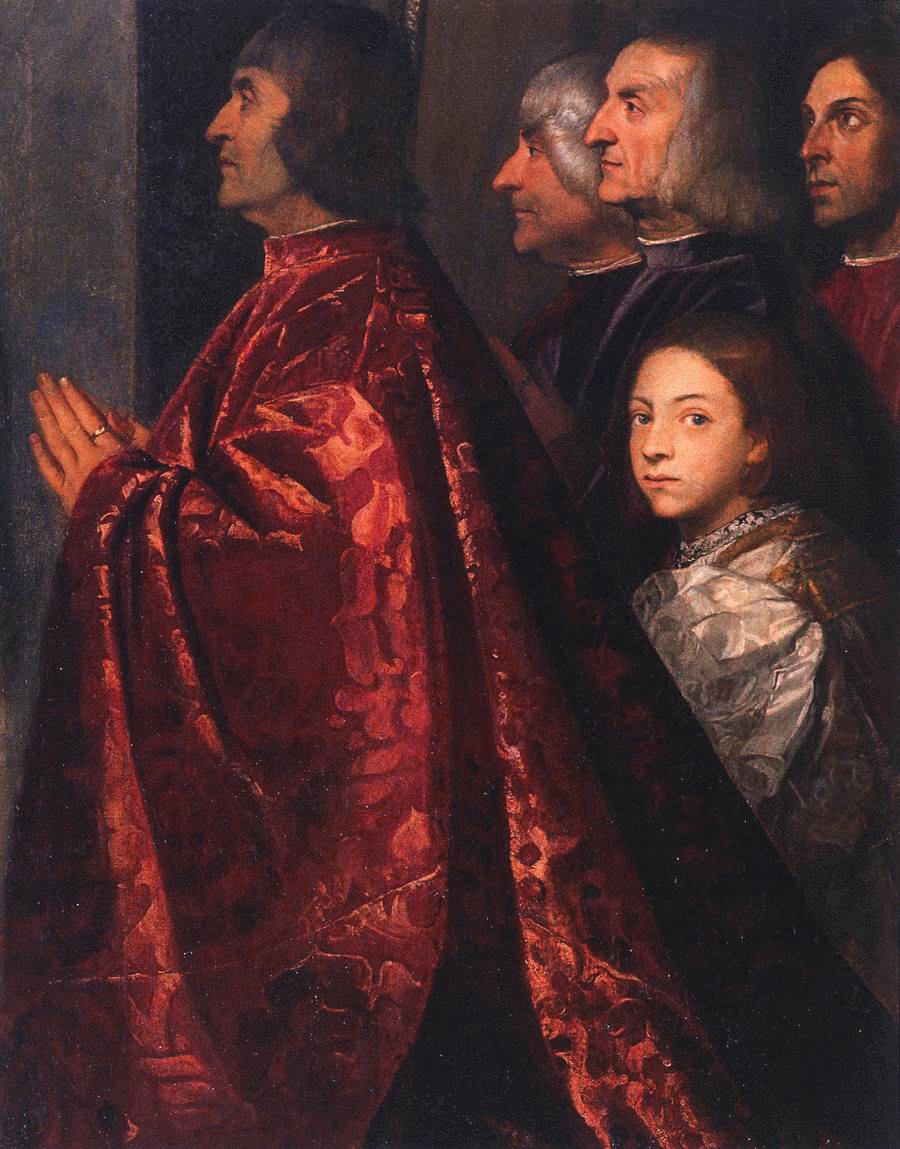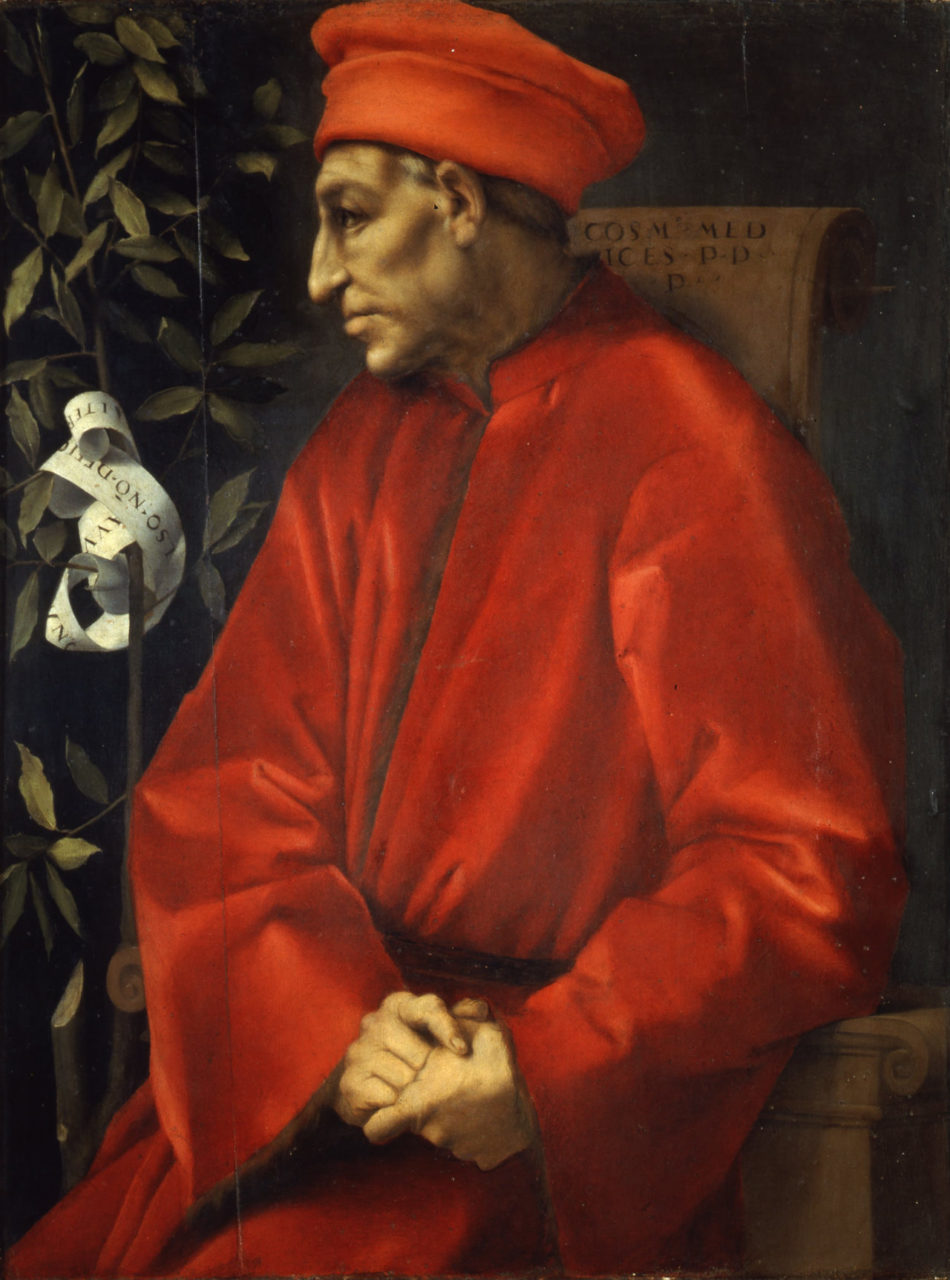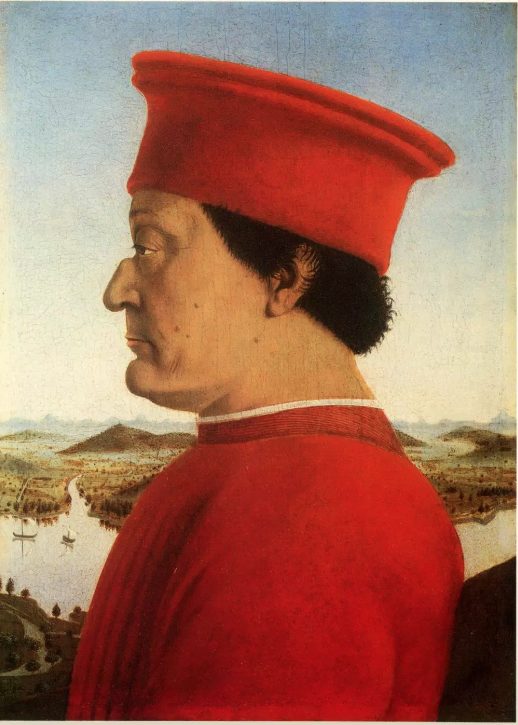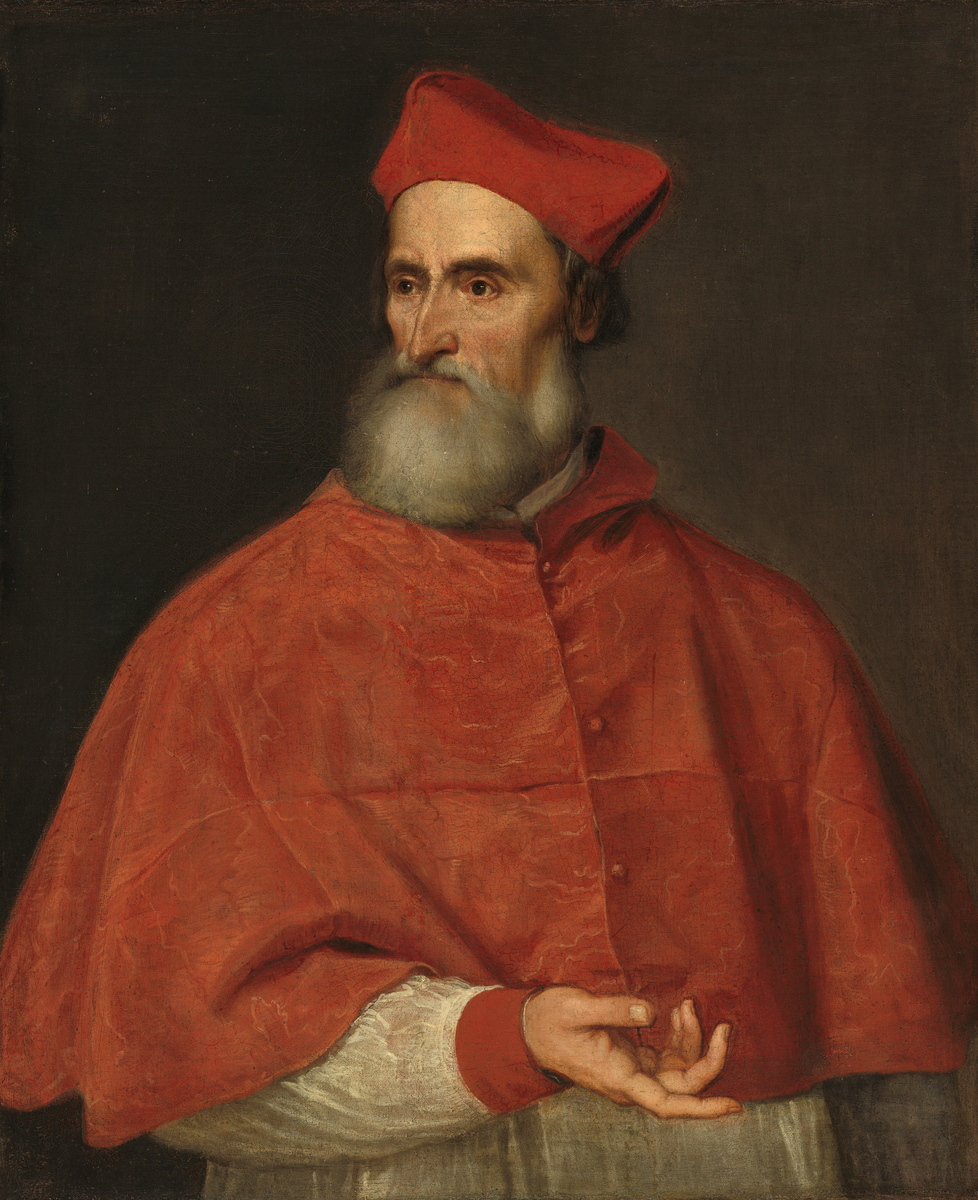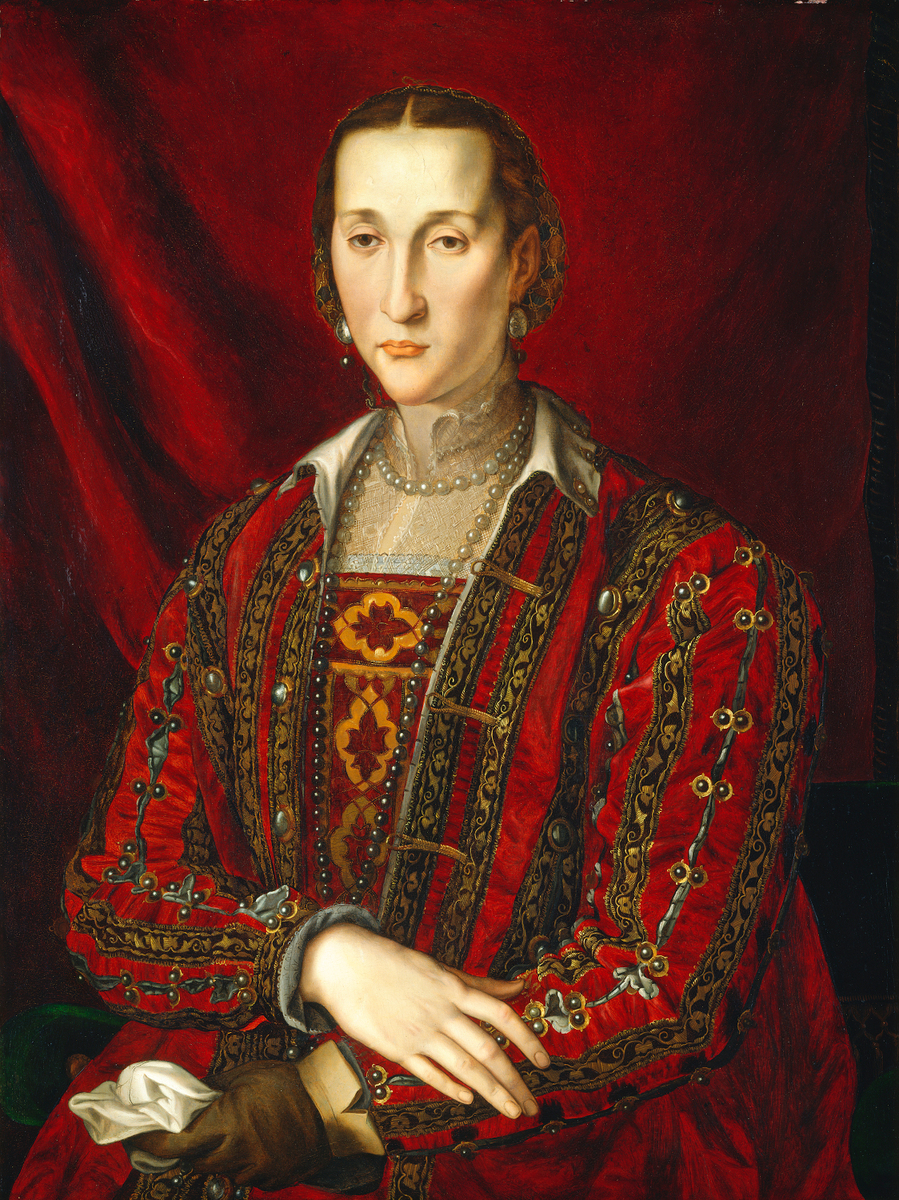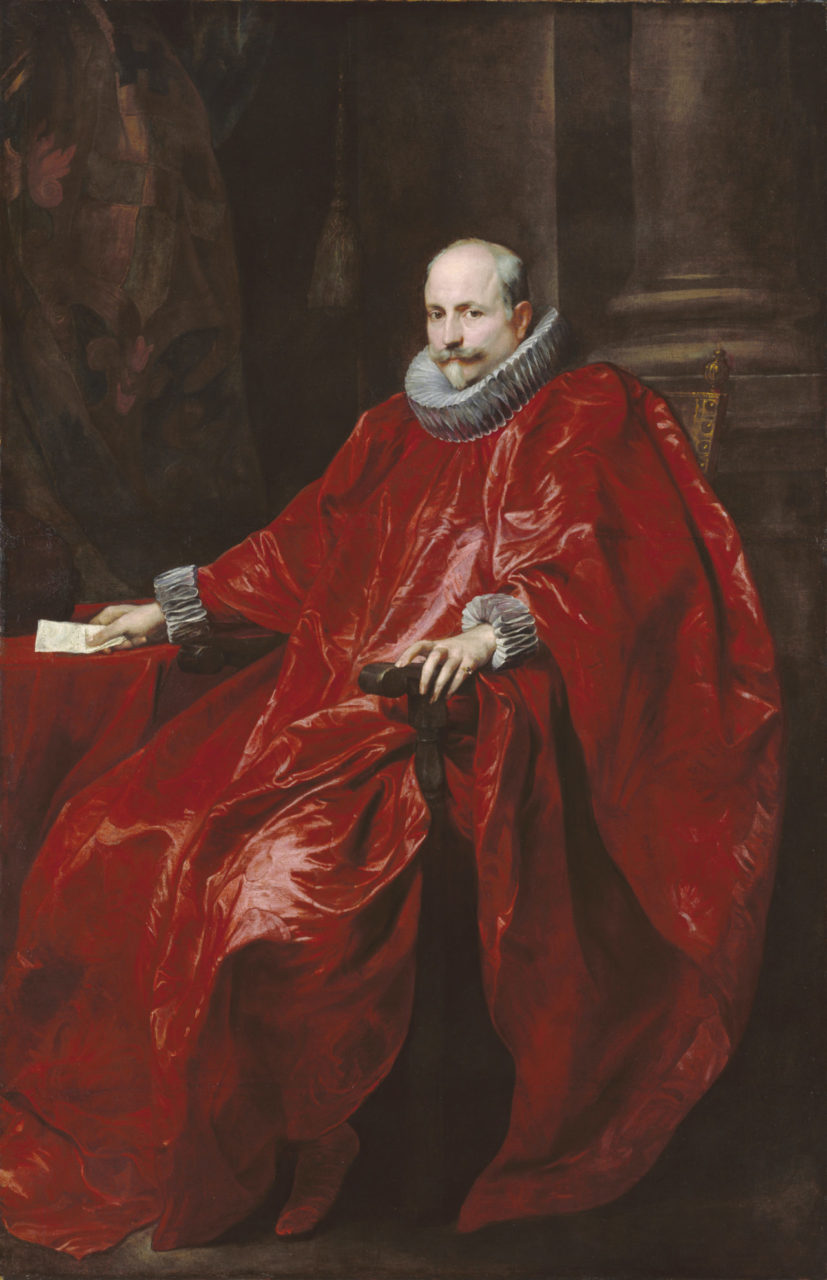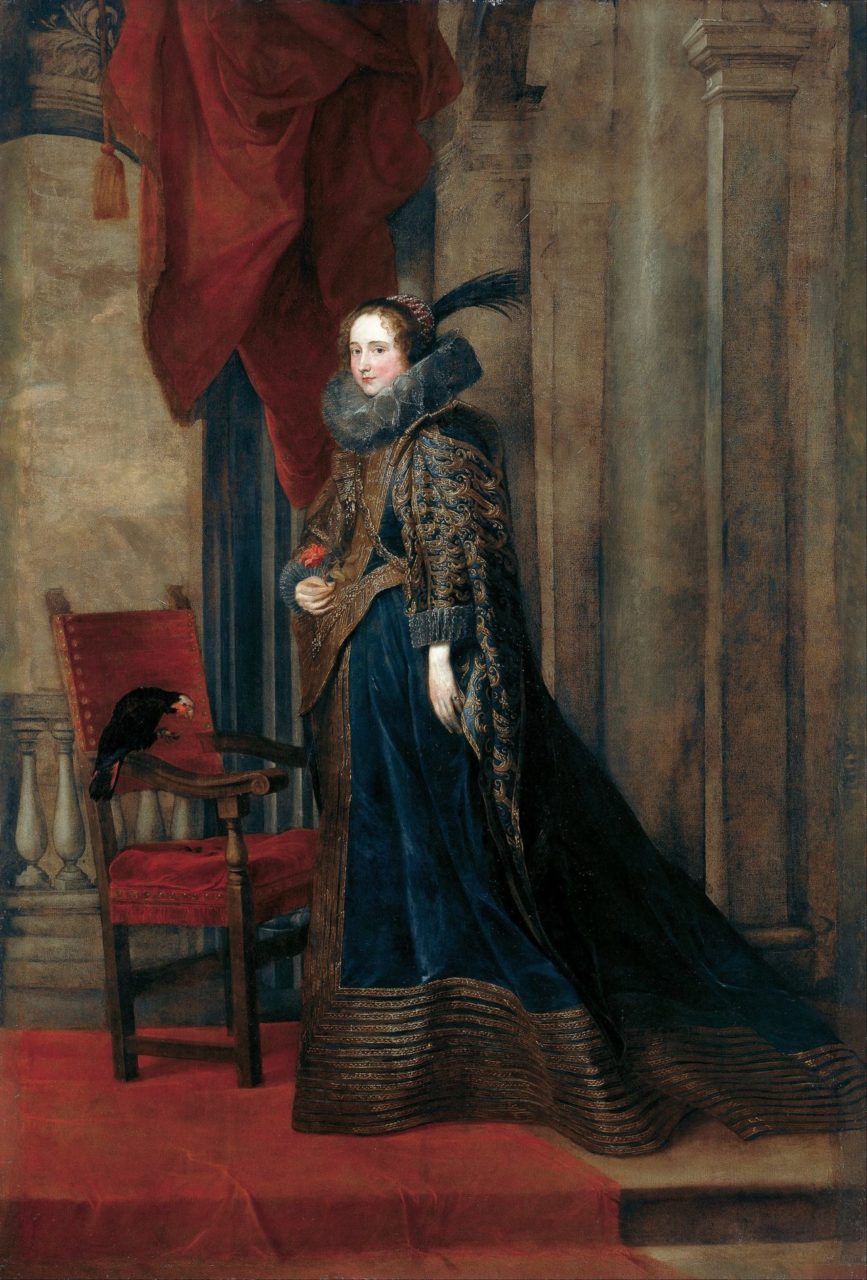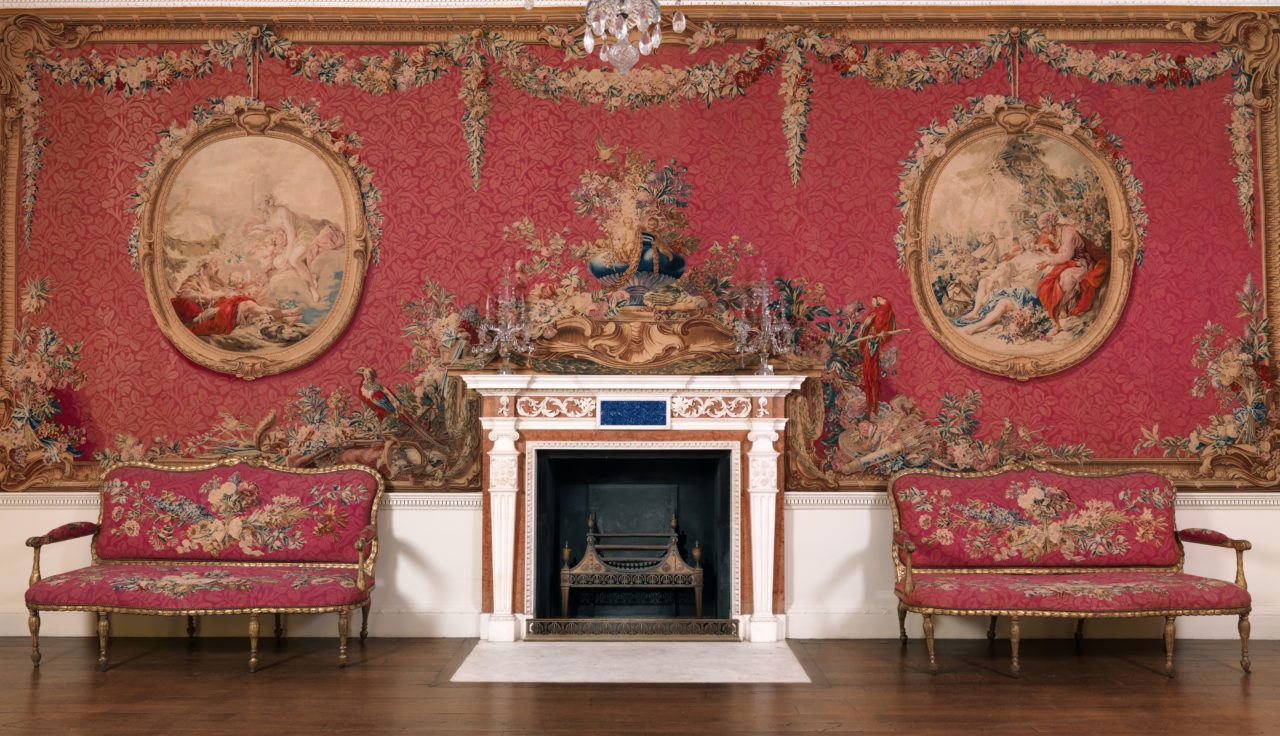This essay investigates how the color red was perceived and produced through the centuries in Europe. After an analysis of the various dyeing techniques, it focuses on the evolution of the value attributed to red in fashion and in society and the consequent changes made in the market.
Red is a color with a distinct history. Throughout the centuries, it was favored for its appealing chromatic value and for its predominance on all colors. Red is an emotionally intense color that, according to psychologists, fuels the metabolism (Butler Greenfield 201). For millennia, wearing red clothes expressed legitimization of social status, political authority, religious rank, ancestry, and cultural identity. Since ancient times human beings have tried to find dyestuffs that could reproduce the powerful tint of blood, fire, flowers, and sunset. The earliest proof of dyed thread dates back to the sixth millennium BC in Turkey, and it was red (Chenciner 31)! Another ancient example is given by the Egyptians who wrapped their mummies in red linen cloths, a color linked to Osiris, ruler of the underworld (Phipps 5). But red, the divine color, was also the color of ardor, courage, and sacrifice. In battle, the Spartans wore scarlet (Brunello 93), as did the Persians (Boucher 67) and later the Romans. For the latter red was associated with Mars, the god of war. It expressed willpower and energy; the meaning is rooted in the etymology of the Latin word ruber (red). The habit of wearing red for symbolic purposes continued for centuries, sharing similar traits throughout Europe.
Red dyestuffs were particularly expensive because of their limited availability, making red cloth even more desirable. The persistent high demand of valuable red cloth pushed the textile industry to explore new technologies and materials, while at the same time boosting important international connections. The secular quest for finding a satisfying red dyestuff was long and tortuous. In many cases colors would fade too quickly, they were too weak, or too unpredictable, or complicated to produce. It took time and experience to find the right red.
Fig. 1 - Artists unknown. Mantle of Roger II of Sicily, 1133-34. Samite, silk, gold, pearls, rubies, filigree, sapphires, garnets, glass, and cloisonné enamel; 345 x 146 cm. Vienna: Kunsthistorisches Museum. Source: KHM
Dyes and Procedures
The following were the most employed red dyestuffs before the sixteenth century:
Madder: one of the oldest, is native to Europe, North Africa and the Near East. It’s a perennial herb whose roots are used for dyeing. The older the plant, the higher the concentration of the coloring ingredient. The core of the roots is ground and the dye is extracted in warm water. It is inferior to animal dyes because it is less stable and was mainly used for wool.
Brazilwood: yields deep crimson, but fades quickly and presents the risk of stiffening the cloth. This is a tree that grows in Asia. Its wood is ground and sprayed with water; it is then left to ferment and eventually releases an orange-red liquid. It was quite cheap and was generally used with other red dyes to intensify the color or to dye inner parts of garments.
Kermes: considered the best quality dye available for reds, it produces an intense and brilliant red. It comes from the East, and has a good color-fastness. It is obtained from the dried bodies of pregnant kermes, insects found on kermes oak. The term crimson is derived precisely from the insect kermes. The insects were killed with vinegar vapors and then dried. It was very expensive and was used for silk, wool and leather. It was also called Venetian scarlet (Chenciner 305).
Grain: the same type of parasite insect but found on Mediterranean oaks. It was of lesser quality, hence it cost half of kermes. It was called grana, grain.
St. John’s blood (or Polish cochineal): derived from parasitic insects called cochineal living on the roots of a perennial knawel, once cultivated in Eastern Europe. It was more valuable than Armenian cochineal because the insects contain a higher concentration of colorant. The insects are harvested at the beginning of the summer, uprooting the plant, which is then planted once again after the parasites have been removed. The insects are sprayed with vinegar or cold water and then dried.
Armenian Red (Armenian cochineal): derived from parasitic insects that live on the roots of a plant that grows in Armenia. These two kinds of cochineal are very similar in terms of chemical composition. The insects are harvested in the early morning using the same procedure used for Polish cochineal.
Three different procedures can be applied for the above natural dyes.
Direct dyeing: the cloth can be dyed without pre-treatment. The dye is dissolved in an aqueous solution and is fixed directly to the fibers of the textile. The color fastness (the term used to indicate color’s resistance to fading) is scarce but the procedure can be repeated for improvement.
Mordanting dyeing: the dominant process. Mordants (biting-in) prepare the fibers to make them more receptive to dye. The mordant, generally a metal such as alum or iron, is a dye fixative that allows a very good level of color fastness.
Vat dyeing: the dyeing takes place in a vat or basin. The dyes are reduced through fermentation and the process works through a series of chemical reactions (Bensi 38; van Bommel & Joosten 167-169).
The color of a textile depends on the type and quality of dyes used, the mordants, the level of concentration of the solution in the dye bath, and the length of time the fibers are boiled or steeped (Fig. 2).
Fig. 2 - Bartholomaeus Anglicus and Jean Corbechon. Dyers At Work, Manuscript Copied and Painted in Brussels, 1482. London: British Library, Royal Manuscript 15e.Iii, Folio 269 © The British Library Board/Leemage. Source: The Paris Review
Fig. 3 - Artist unknown. The nopal plant that is grown in America and produces grana [insect dye]. Reports on the History, Organization, and Status of Various Catholic Dioceses of New Spain, and Peru (1620-49), fol. 85.. Chicago: Newberry Library, Vault Ayer MS 1106 D8 Box 1 Folder 15. Source: JSTOR
The production of luxury clothing represented an important sector of the economy and employed a variety of classes that included merchants, dyers, spinners and weavers.
Luxury items were emblems of wealth and power that the upper classes could not do without. In the Italian states, elite families would spend an incredible percentage of their annual income on precious textiles. It was a duty and a pleasure to wear them. The brightness of the color was valued more than the hue, and the vibrant chromatic intensity of scarlet and crimson were particularly treasured. Sumptuous cloths had become international currency and were kept in such a high esteem that they represented cherished gifts from one sovereign to another on the occasion of visits, marriages, or celebrations. Textiles were valued even more if they were red. Red was a sign of status, it was so visible that even the illiterate (at the time the majority of the population) could comprehend the powerful message delivered (Butler Greenfield 9). The business revolving around the production of luxury red cloth brought about fierce international competition and led to trade secrets jealously preserved by families, guilds, and towns.
The Case of Venice
Since the Middle Ages, the members of the European elite were willing to pay astronomical prices for precious velvets, taffetas, damasks, sleek satins and tapestries. Sumptuous textiles represented an important sign of authority and affluence that went beyond their intrinsic value. In the year 800 Charlemagne wore red shoes for his coronation (Butler Greenfield, 204), and the mantle of Roger II of Sicily (Fig. 1) created in the twelfth century for Holy Roman emperors, was made of gold on a vivid red background. In the fourteenth century Richard II of England was represented in an important painting completely covered in kermes dyed fabric, shoes included. By the fifteenth century, the textile industry was flourishing in Europe in centers such as Florence, Lucca, Venice, Genoa, Bruges and Lyons.
Among the most important producers of red dyes was Venice, a wealthy republic that made its fortune through trading, including the precious kermes.
“The deepest and most resplendent reds, collectively known throughout Europe as ‘Venetian scarlet’, were the envy of all who saw them.” (Butler Greenfield 32)
The city was known for the manufacturing of the most magnificent textiles (Fig. 4) and the production of a considerable variety of reds, among them the famous Venetian scarlet–the generic name for all the luxurious reds–whose recipes were staunchly protected by state secret.
All textiles sold in Venice had to be dyed locally and, in order to prevent irregularities, the government resolved that the work of the dyers had to be regulated. In 1243 dyers were united in a guild; they had to vouch that they would return textiles in their original dimensions and of the requested color; for example, if scarlet was ordered they could not mix kermes with madder, a less valuable red. The dyers’ performance reflected on the reputation of the city, and the city was vigilant about satisfying both ordinary and significant international commissions. In the sixteenth century King Françis I of France ordered hundreds of satins for his wardrobe, and the English used to send their cloths to be dyed in Venice and Florence (Davanzo & Moronato 174).
Fig. 4 - Titian (Italian, 1490-1576). Madonna of the Pesaro Family, 1519-26. Oil on canvas; 40 x 22.8 cm (16 x 9 in). Venice: Santa Maria Gloriosa dei Frari. Source: Wikimedia
Fig. 5 - Jacopo Carucci (Pontormo) (Italian, 1494-1557). Portrait of Cosimo de' Medici the Elder, 1519-1520. Oil on panel; 86 x 55 cm (33.8 x 21.5 in). Florence: The Uffizi, 1890: 3574. Source: Google Arts & Culture
Fig. 6 - Maker unknown (Florentine). Burial clothes of Don Garzia de' Medici: Doublet with breeches, surcoat, 1562. Crimson satin, gold cord, velvet, damask fabric. Florence: Pitti Palace, Invv. GGC nn. 8723, 8724. Source: Palazzo Pitti
In order to avoid cheating and to maintain the prestige of the famous Venetian reds, the government imposed that the cloths used as merchant’s samples had to be color coded to specify the dye used (cloths dyed with kermes had a green selvage with a thread of gold, if madder was used the selvage was yellow, while the cheaper brazilwood was marked by a dark blue thread). These regulations and others were subject to constant inspections made to the operations of merchants and dyers (Davanzo & Moronato 176).
Also in Venice, the color of clothing was representative of rank and social group. For centuries the procurators (the office of procurator was the second most prestigious life-appointment in the Republic) wore opulent red velvet over silk robes, while senators a slightly less splendid silk. Patricians and citizens instead wore black togas. Dyeing was more important than tailoring and the dye determined the cost of a dress. As robes were all very similar people were adept at perceiving the difference in dye quality, dying process and cloth texture. Reds provided the largest variety of quality and price and were the center of discussions, rules, and writings. A fifteenth-century manual established the superiority of scarlet and crimson above all colors. Of the 159 chapters of another manual, 109 were dedicated to recipes for reds. Among the recipes for reds, 18 were dedicated to the most expensive of all, kermes (Davanzo & Moronato 174).
During the Renaissance, European rulers and their representatives kept on regarding the donning of red as important assertion of their power and privilege (Figs. 5, 6). In 1441, for example, Francesco Sforza, duke of Milan, wore a red doublet at his wedding to Bianca Maria (Herald 109). Florentine ambassadors were sent to the pope all dressed in crimson. Federico da Montefeltro, duke of Urbino, in his famous portrait by Piero della Francesca (Fig. 7), is all dressed in bright red. He wears a hat of a particular fashion typically Italian worn by rulers and condottieri.
Nor was the church immune to the charm of red. Red was not only the color of power, but it was also the color of the blood and the passion of Christ. In 1464 Pope Paul II decreed that crimson should be used instead of the traditional purple (Herald 91). Since then the high ranks of the church started to exercise their authority visually by wearing the most magnificent reds (Figs. 8, 10). In 1468, when Charles the Bold, duke of Burgundy, entered Bruges, he was escorted by a group of foreign merchants where “first rode the Venetians, wearing costumes of red velvet” (Geijeer 142).
Venice enjoyed a privileged access to precious dyes thanks to its Mediterranean and Eastern trade; however this position was challenged by the arrival of the sensational cochineal from the West. For a while, the city tried to resist the new-comer, rebuffing the employment of cochineal in favor of kermes, but eventually it opened its doors to this little insect and its spectacular, bright, intense, durable, and desirable red.
Fig. 7 - Piero della Francesca (Italian, 1416/17 - 1492). The Duke and Duchess of Urbino Federico da Montefeltro and Battista Sforza (detail), 1473-75. Oil on wood. Florence: The Uffizi, Inv. 1890 nn. 1615, 3342. Source: The Uffizi
Fig. 8 - Titian (Italian, 1490-1576). Cardinal Pietro Bembo, 1539/1540. Oil on canvas; 94.5 x 76.5 cm (37 3/16 x 30 1/8 in). Washington: National Gallery of Art, 1952.5.28. Samuel H. Kress Collection. Source: NGA
Fig. 9 - Agnolo Bronzino (Italian, 1503 - 1572). Eleonora di Toledo, ca. 1560. Oil on panel; 86.4 x 65.1 cm (34 x 25 5/8 in). Washington, DC: National Gallery of Art, 1961.9.7. Samuel H. Kress Collection. Source: The National Gallery of Art
Cochineal
When cochineal from Mexico was introduced to Europe in the first part of the sixteenth century, it soon supplanted all the other red dyes. It revealed itself to be an amazingly powerful dye, so much more intense, bright, vivid, and durable than any of the old world’s reds. One ounce of cochineal dyestuff could produce thirty times the dye of Armenian red, generating the most spectacular and coveted scarlets and crimsons (Butler Greenfield 76).
In 1519, the Spanish conquistadors noticed that Mexican native populations were selling at the market bags of a stunning red dyestuff called grana cochinilla, or cochineal. This precious material was also used as bargaining chips or as tribute to rulers. Dry cochineal was durable and easy to transport and red dyes were in very high demand in Europe. The sensational effect made by cochineal in the old world made it one of the most profitable exports from the Americas, supporting Spain’s economy for centuries.
What is cochineal? It’s a scale insect belonging to the same family of Armenian and Polish cochineal. It is a parasite whose habitat is a cactus generally called nopal or prickly pear. The cochineal sucks the juices of the nopal with its proboscis. The female spends all of its life eating, and for defense against certain predators it produces a carminic acid. It’s the carminic acid that determines the acclaimed bright, intense red dye (Fig. 3).
The territory of Oaxaca was the chief cochineal producing region where the natives had grown it for about two millennia. Breeding and harvesting required time, patience, and skill and it was possible only in small plots of land run by locals animated by personal interests. A pound of cochineal was made from 70,000 insects (Lee 451).
In Europe and in the East, cochineal became one of the most sought-after items, a true commodity that changed the dynamics of the global trade. Its price generated international speculations among bankers, merchants, and high-ranking diplomats, to a degree that in 1585 a cochineal cartel was introduced which had effects throughout Europe (Butler Greenfield 77).
“Cochineal was the closest thing Europe had ever seen to a perfect red.” (Butler Greenfield 76)
For more than two centuries the nature of cochineal was an enigma for merchants and dyers –they had no clue about its composition. When it was finally revealed, entrepreneurs from all over Europe tried to breed those same insects but the terrain and weather conditions always proved to be problematic for the delicate cochineal.
Cochineal was also used as a pigment by artists such as Tintoretto, Rubens, Van Dyck (Figs. 10-11), Rembrandt, Velasquez, and later by Turner and Van Gogh. Today, it is employed in cosmetics for lipstick and rouge.
Fig. 10 - Anthony van Dyck (Flemish, 1599 - 1641). Portrait of Agostino Pallavicini, ca. 1621. Oil on canvas; 216.2 × 141 cm (85 1/8 × 55 1/2 in). Los Angeles: The J. Paul Getty Museum, 68.PA.2. Source: The Paul Getty Museum
Fig. 11 - Anthony van Dyck (Flemish, 1599 - 1641). Portrait of Paolina Adorno-Brignole-Sale, 1627. Oil on canvas; 286 x 151 cm (112.5 x 59.4 in). Genova: Musei di Strada Nuova - Palazzo Rosso, inv. PR 51. Source: Wikimedia
Fig. 12 - Jean-Auguste-Dominique Ingres (French, 1780-1867). Napoleon on the Throne, 1806. Oil on canvas; 260 x 163 cm (102.3 x 64.1 in). Paris: Musée de l'Armée, 4; Ea 89/1. Source: La Fondation Napolean
Red After Cochineal
From the sixteenth through the seventeenth century, fashion tastes changed. Emperor Charles V and the Spanish aristocracy started to favor black over red. Spanish taste for black became pervasive and Spain quickly imposed the new fashion on all of Europe. Red continued to persist, as recorded in documents and portraits; however it was used mainly for draperies, curtains and upholstery as shown in paintings where red gives prominence to the figures, and life to the composition (Fig. 11).
By 1625 the Dutch were the leaders in the production of cochineal dyes, accepting lucrative commissions such as the one received from England which employed 50,000 Dutch workers. In the middle of the seventeenth century the military and political leader Oliver Cromwell redesigned the infantry coats of the British army. The elegant woolen cochineal red uniforms would characterize the British army from that moment until the end of the 19th century (Phipps 28-29).
In the 1670s-80s, the court of Louis XIV at Versailles disseminated the fashion of wearing talons rouge (red heels) to all European courts. In the eighteenth century the use of red dyes was directed mainly to upholstery and tapestry. One of the finest examples is the Tapestry Room from Croome Court. Produced by the French Royal Gobelins manufactory, it is a room hung with sets of cochineal-dyed red tapestry furnished with sofas and armchairs covered with matching upholstery (Fig. 13).
Fig. 13 - Room after a design by Robert Adam, Tapestries and furniture covers manufactured by Manufacture Nationale des Gobelins (French, established 1662) (British, 1728-1792). Tapestry Room from Croome Court, 1763-71. New York: Metropolitan Museum of Art, 58.75.1-.22. Gift of Samuel H. Kress Foundation. Source: The Metropolitan Museum of Art
During the Napoleonic empire, at the beginning of the nineteenth century, red continued to embody power (Fig. 12), but it had almost disappeared by the end of the century. Society became more sober, permeated by democratic ideas and bourgeois values. Red became usually associated with the aristocracy and sexual excesses, holding fairly negative connotations.
In the 1870s a new generation of synthetic reds became available. The first of these red dyes was called alizarin, and more, better synthetic dyes were developed shortly thereafter. These represented the final blow to the once-thriving cochineal market.
At the end of the century, William Morris with his Arts and Crafts movement, promoted a return to traditional craftsmanship, rejecting industrialization and reviving natural dyes such as madder and cochineal. In the early twentieth century, inspired by this movement, the Spanish-Italian fashion and textile designer Mariano Fortuny, used natural dyes for his dresses, and with his work cochineal saw a new ascent in the world of fashion (Fig. 14).
Today, red is not as symbolically charged as it was in the past, but it still is not a color for everyone. It is a difficult color to wear; red requires a certain amount of self-confidence and still today it has connotations of strength and power.
Fig. 14 - Mariano Fortuny (Spanish, 1871-1949). Delphos dress, after 1909. Pleated taffeta silk; 146 cm (57.4 in). Venice: Collezioni di Museo Fortuny, inv. C016. Source: Pinterest
The designer Valentino has made the color red his trademark: his red is iconic, elegant, and grand (Fig. 15). Red, with its opulent intensity, has been tested by time and persists with being one of the most powerful colors in today’s day and age.
Fig. 15 - Valentino Garavani (Italian, b. 1932). Scene from the documentary "Valentino: The Last Emperor", 2008. Source: Screen Daily
References:
- Bensi, Paolo. “Aspects of Dyeing Techniques and Materials in Italy during the 15th century.” In Silk Gold Crimson: Secrets and Technology at the Visconti and Sforza Courts, edited by Chiara Buss. Milan: Silvana Editoriale, 2009. http://www.worldcat.org/oclc/769996408
- Boucher, Francois. A History of Costume in the West. London: Thames and Hudson, 1996. http://www.worldcat.org/oclc/1017769472
- Butler Greenfield, Amy. A Perfect Red: Empire Espionage and the Quest for the Colour of Desire. New York: Harper Collins, 2006. http://www.worldcat.org/oclc/751834590
- Butler Greenfield, Amy. “El poder derl rojo: los significados del rojo en Europa”. In Rojo mexicano: la grana cochinilla en el arte, edited by Georges Roque, Museo del Palacio de Bellas Artes, 2017. http://www.worldcat.org/oclc/1017769472
- Brunello, Franco. The Art of Dyeing in the History of Mankind. Vicenza: Neri Pozza, 1973. http://www.worldcat.org/oclc/248879868
- Chenciner, Robert. Madder Red: A History of Luxury and Trade. Richmond: Curzon Caucasus World, 2000. http://www.worldcat.org/oclc/773432021
- Davanzo, Poli D. and Stefania Moronato. Le stoffe dei veneziani. Venice: Albrizzi, 1994. http://www.worldcat.org/oclc/32922346
- Geijer, Agnes. A History of Textile Art. Leeds: W.S. Maney, 1979. http://www.worldcat.org/oclc/870552217
- Herald, Jacqueline. Renaissance Dress in Italy: 1400-1500. London: Bell et Hyman, 1981. http://www.worldcat.org/oclc/844019175
- Phipps, Elena. “Cochineal Red: The Art History of Color.” The Metropolitan Museum of Art Bulletin 67, no. 3 (Winter 2010): 4-48. http://www.jstor.org/stable/25701595
- Raymond, Lee. “Cochineal Production and Trade in New Spain to 1600.” The Americas 4, no. 4 (1948): 449–473. http://www.jstor.org/stable/977830
- van Bommel, Maarten and Joosten Ineke. In Silk Gold Crimson: Secrets and Technology at the Visconti and Sforza Courts, edited by Chiara Buss. Milan: Silvana Editoriale, 2009. http://www.worldcat.org/oclc/769996408

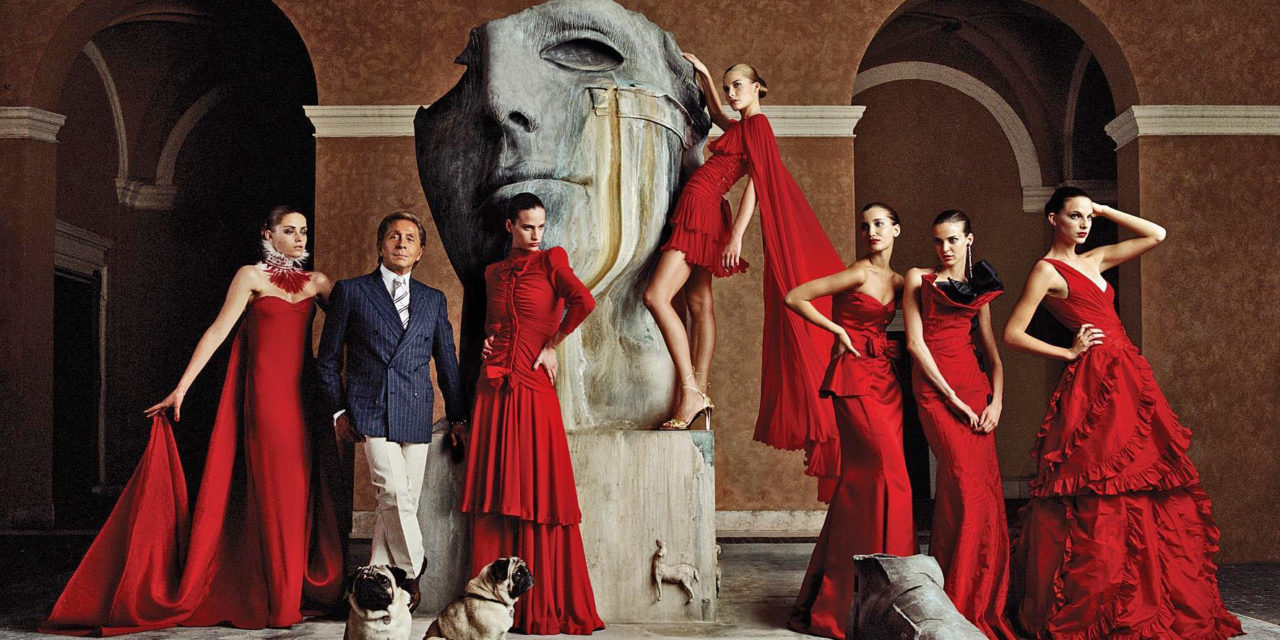
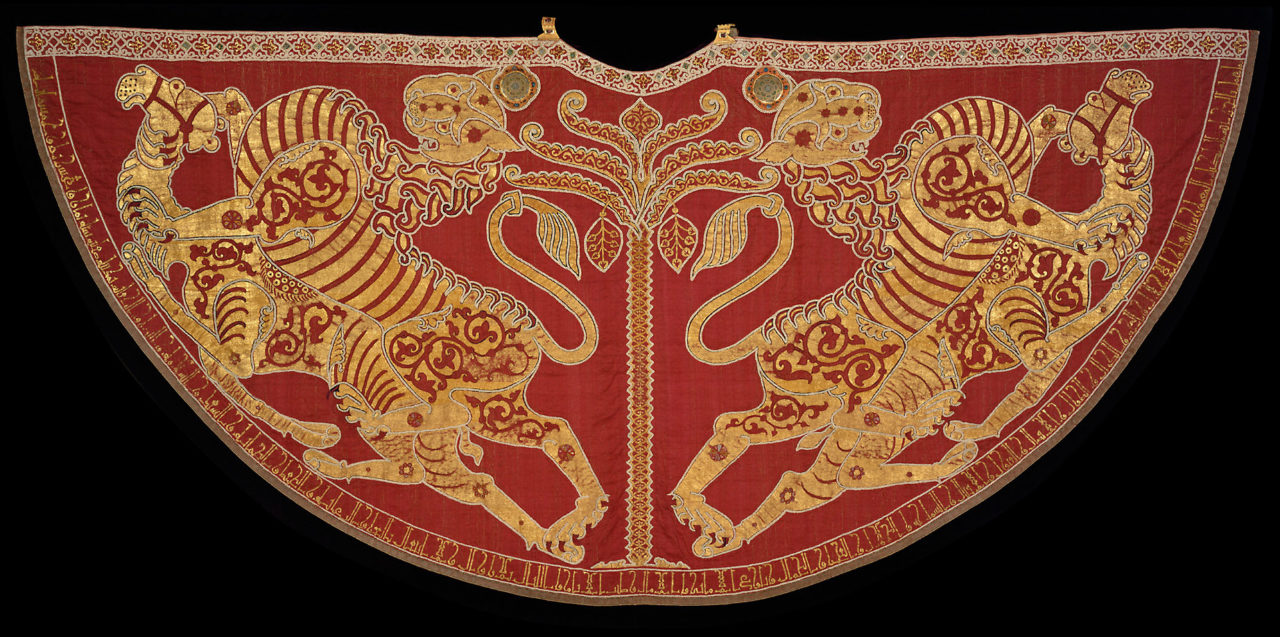

![The nopal plant that is grown in America and produces grana [insect dye]. Reports on the History, Organization, and Status of Various Catholic Dioceses of New Spain, and Peru (1620-49), fol. 85. The nopal plant that is grown in America and produces grana [insect dye]. Reports on the History, Organization, and Status of Various Catholic Dioceses of New Spain, and Peru (1620-49), fol. 85.](https://fashionhistory.fitnyc.edu/wp-content/uploads/2018/06/3.-Cochineal-and-Nopal.jpg)
